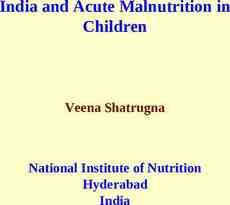ENTREPRENEURSHIP, KNOWLEDGE MANAGEMENT, CREATIVITY OF COOPERATIVE
24 Slides241.66 KB

ENTREPRENEURSHIP, KNOWLEDGE MANAGEMENT, CREATIVITY OF COOPERATIVE LEARNING OF FIRMS AND THE MAGIC OF CREATIVITY Università degli Studi di Trieste May 9, 2019 Michael Steiner Institute of Economics University of Graz

2 o Outline Who is an entrepreneur? Features and characteristics Knowlege sharing and organizational learning new focus of clusters and networks economics theory - empirical analysis – conclusions Creativity as a challenge for firms – from cultural to creative industries to a creative class and creative firms A tentative approach of operationalization with new insights Further reading

3 o Who is an entrepreneur? Different definitions entreprendre - to do something Schumpeter (1942/1946): entrepreneur as innovator not inventor but operator and early adopter Entrepreneur – translate knowledge into economically useful knowledge Individual characteristics of persons: own responsibility, creativity, alertness, initiative, willingness to take risks, assertiveness Mostly connected with foundation of an enterprise, with self- employment and autonomy In contrast to employed workers/employees yet here: intrapreneurship managers? Young firms or in the phase of foundation with special dynamics as opposed to old/established firms GEM: nascent-young entrepreneurs vs. established business ownership Opportunity – necessity entrepreneurship Value of entrepreneurship?

4 o Features and Characteristics of Entrepreneurship Analytical differentiation of entrepreneurial action: self-employment, capitalistic enterprise or entrepreneurship Charisma? Or rather competence and ability to empathise Cooperation and learning Creativity

5 o Knowledge sharing and organizational learning of firms in networks and clusters New focus of clusters and networks Porter (1998, 2000): clusters as geographic concentrations of interconnected firms in related industries and associated institutions in a particular field that compete but also cooperate New emphasis clusters and networks as important elements of the knowledge economy knowledge management innovation favoured by regionally concentrated interaction of (mostly) small firms mutually exchanging information in formal and informal ways concept of clusters and their networks as condensed forms of economic activities combine theoretical elements of knowledge proximity institutional character

6 o Knowledge sharing and organizational learning of firms in networks and clusters open questions motives and incentives of firms for cooperation form and content of interaction division of labour vs. knowledge sharing forms of (organizational) learning and knowledge exchange regional versus global dimensions of interaction diffusion of knowledge and organization of learning – collective or selective / structured, informal of participative

7 o Knowledge sharing and organizational learning of firms in networks and clusters Theoretical aspects Networking as an important form of innovative activity for regions, for strategic management and industrial dynamic approaches to interfirm cooperation In need of specific guiding and coordinating institutions – not only markets as soon as knowledge is involved Clusters and networks as coordinating institutions providing a cognitive framework for transforming information into useful knowledge Dimensions of knowledge Large heterogenity between sectors and industries in terms of knowledge and transformation into innovations

8 o Knowledge sharing and organizational learning of firms in networks and clusters Process of information based on division of labor A. Smith: social nature of innovation process requires framework to connect different agents Knowledge and skills: connectivity in need of specific institutional arrangements New Institutional economics character of interaction changes in form and impact division of labor: goods and services – competition knowledge sharing: knowledge and skills – cooperation institutional consequence: cooperation is basic institution of the process of the division of knowledge Individual – organizational learning

9 o How Do Clusters Cooperate and Learn Clusters as institutions that raise the efficiency of knowledge exchange Material and immaterial dimensions Material: firms are linked to one another in a value-adding production chain meso-level analysis via regional input-output-model Immaterial: learning and knowledge exchange micro-perspective Socio-psychological theories of organizational learning learning no black box, but as a transparent process of knowledge creation Operationalization of specific learning systems

10 o Clusters as Learning Organizations Interfirm communication and interactive processes of learning play decisive role in the process of innovation and growth Changing character of learning departure from ‘black box’ conceptualization from individual process to small groups, whole organizations and even interorganizational activity Learning as a communicative process rather than a cognitive performance Organizational learning as outcome of three overlapping spheres of activity: individual, team and system learning

11 o Clusters as Learning Organizations II Learning systems in organizations: One-man institutions mythological learning systems informal learning systems participative learning systems formal management systems bureaucratic learning systems For clusters relevant: participative and informal learning systems made operable through identification of concrete forms Learning system Particular forms at the cluster level Informal learning system Informal meetings in bars or at conferences etc. ‚Old boys‘ networks Social networks (clubs, etc.) Facilitated exchange of experiences Participative learning system Interfirm research and development teams Interfirm project teams Benchmarking clubs Participation in consortia Table 1: Particular forms within learning systems

12 o Empirical Results Methodology starting point: clusters as value chains identified via regional inputoutput-model 5 clusters: automotive, chemical/pharmaceutical, machinery and metal, wood/paper, IT Questionnaire sent to 1.631 Styrian firms – return rate 20% In-depth-interviews with with 149 human resources managers in the specific clusters concerning collaborative behavior and presence of particular forms of learning systems

13 o Empirical results: Learning orientation of the clusters Chemical Information Technology Wood Metal Automobile Informal meetings in bars or at conferences 80 90 74 46 67 Communities of practice 16 25 22 18 21 Old boys networks 30 50 22 23 31 Social networks 5 10 14 5 21 Facilitated exchange of experience 42 20 53 33 26 Informal learning systems: summary mean figure 55 39 37 25 33 Chemical Information Technology Wood Metal Automobile Interfirm research and development teams 50 55 41 41 50 Interfirm project teams 21 70 50 50 67 Participation in consortia 6 35 12 21 22 Benchmarking clubs 17 40 54 47 53 Participative learning systems: summary mean figure 23 50 39 40 48

14 o Empirical results III Informal Learning 50% 45% 40% Wood IT Chemistry 35% 30% Chemistry Auto 25% 20% wood Metal 15% 10% Auto 5% 0% Metal 0% 10% 20% 30% 40% Participative Learning 50% 60% IT Learning systems in Styrian clusters Learning orientation depends on corresponding working cultures within the relevant industries as it does on the existing value chains and the prevailing competitive structure Collaboration with the regional knowledge infrastructure

15 o Conclusion and Interpretation Explorative approach Also immaterial links between clusters Interpreted as different learning systems Learning no ‘black box’ Participative approach more common than informal learning Underlines importance of a conscious effort Dominant form: interfirm project teams and interfirm R&D teams Within informal forms social networks rather unimportant Several factors that influence the form of learning systems Confirm interpretation of clusters as institutions for knowledge management

16 o CREATIVITY AS A CHALLENGE FOR FIRMS Creative industries as an open economic and political label From cultural to creative industries to a creative class Creativity as a continuum A tentative approach of operationalization Options for future research and policy

17 o CREATIVITY ? Creative industries as a key word ‚creative class‘ as a driver of the economy (Florida 2002, Gabe, Florida, Mellander 2012) additional dimensions not only a metropolitan phenomenon also outside of the developed world – ‚The Orange Economy‘ (Buitrago & Duque 2013) culture and creativity not only for ‚creative industries‘ Critical discussions only magic word? coherent construct despite ist heterogeneity? question of measurement Two aspects to be adressed trans-sectoral character of creativeness creativity as a continuum

18 o FROM CULTURAL TO CREATIVE INDUSTRIES TO A CREATIVE CLASS Incompatibility of arts/culture and business/economics (Adorno 1947, Adorno Horkheimer 1991) - in 1980s exact opposite From arts and culture to information and communications technology Four part value chain: content origination, Manufacturing inputs, reproduction, exchange (Pratt 1997) – later on: integrated whole Definition of British Department of Culture, Media and Sports emphasizes growth potential and market orientation ‘creative industries’ combine creative arts and cultural industries Yet no clear line Is it sector or occupation? creative activities undertaken by individuals in individual companies Yet industrial classification systems categorize entire industries in sectors Ultimate intellectual property is human creative faculty (Florida 2002) Hence: ‘creative class’ of special occupations with ‘supercreative core’ creating regional income, even happiness of nations 3 Ts: talent technology tolerance - the latter leading to a ‘gay index’ Yet. Still problem of a dividing list – ‘who is in and who is out’

19 o FROM CULTURAL TO CREATIVE INDUSTRIES TO A CREATIVE CLASS Matrix Creative Industries Yes Creative Yes Occupation No Creative industries - core Creative industries in a broader sense No Creative industries in a broader sense Not part of the creative industries Limitations of statistical data Availability, outdated, confidentiality, freelancers usually not included

20 o CREATIVITY AS A CONTINUUM Not reasonable nor realistic to draw a sharp line between being creative or not New approach: look at creative activity (process) that results in a product or service Focus on human beings and their activity Creativity can be observed as a continuum Criteria based on literature of behavioral aspects, knowledge management, psychology, new organizational forms and changing labor markets Not just education but actual skills – physical, cognitive, social intelligence Characteristics of creative activities to form the core of our definition: not-standardized or precisely defined modular systems that allow limited adaptations completely free and new solutions impossible to determine the exact final result in advance input cannot be estimated precisely in advance not possible to determine the final result The descriptive criteria are used to calculate index of creativity as a new tool Analysis at the micro-level of (creative) businesses not at the macro-level of cities and regions

21 o A TENTATIVE APPROACH OF OPERATIONALIZATION A case study on creative firms in Graz on the basis of a phone survey of 515 business (with 495 usable replies) using a traditional sector-based definition of creative industries with about 25.000 employees Interviewees were confronted with a list of statements without mentioning the term ‘creativity’ ‘Index of creativity’: answers to the statements were coded 0 (does not apply), 1 (applies to some degree), 2 applies completely) – index ranges from not creative (not a single characteristic applies) to 12 (very characteristics, all characteristics apply completely) Characteristics Applies completely Applies to some degree Does not apply The service/product is not standardized (no ‘one size fits all’ solutions). 47,5 % 22,5 % 30,0 % Limited adaptations are possible to respond to customer requests (e.g. a modular system 56,3 % 20,6 % 23,1 % Generally I develop completely free and individually designed solutions for each client. 60,8 % 22,1 % 17,1 % The service/product is so complex that it is difficult for me to to define the exact final 35,3 % 21,0% 43,7 % 10,2 % 19,9 % 69,9 % 24,4 % 24,6 % 51,1 % or a combination of predefined alternatives). result in advance. It is difficult for me to estimate in advance the inputs necessary (time, costs for materials) to perform the service/develop the product. It is not possible to determine the exact final result already at at the start of the contract Source :own calculations

22 o A TENTATIVE APPROACH OF OPERATIONALIZATION Degree of creativity according to index

23 o CONCLUSIONS AND OPTIONS CHALLENGES FOR RESEARCH AND POLICY New approach focusing on the definition of creative activities instead of using industrial sectors enriching existing approaches No sharp line between ‘creative’ and ‘not creative’ – creativity as a continuum Micro-level, firm-based approach which categorizes specific forms of behavior ‘index of creativity’ – results show that there is a broad range of being more or less creative Approach can be extended, refined and made to include additional forms of behavior Like all survey-based approaches it is time- and resource intensive It provides a tool to get better insights into (also) spatially differentiated attitude to creativity Repeated surveys would allow a monitoring of creative activities Policy: differentiated perspective as to the objects of policy support new focus: how to increase the degree of creativity in various industries not sector-, but business oriented with a behavioral perspective

24 o Further Reading Acs, Z.J., Armington, C. (2006), Entrepreneurship, Geography, and American Economic Growth, Cambridge;New York, Cambridge University Press. Audretsch, D. B., Lehmann, E. E., (2006), The role of clusters in knowledge creation and diffusion: An institutional perspective, in: Asheim, B., Cooke, Ph., Martin, R. (eds.) clusters and Development. Critical reflections and explorations, Routledge, Oxon, 188-98. Fritsch, M. (2008), How does new business formation affect regional development? Introduction to the special issue, Small business Economics 30, 1-14 Steiner, M., (2006), Do clusters think? An institutional perspective on knowledge creation and diffusion in clusters, in Asheim, B., Cooke, Ph., Martin, R. (eds.) clusters and Development. Critical reflections and explorations, Routledge, Oxon, 199-217. Steiner M., Hartmann, Ch. (2006), Organizational Learning in Clusters. A Case Study on Material and Immaterial Dimensions of Cooperation, Regional Studies, Vol. 40:5, 493-506. Steiner, M., Ploder, M., (2008), Structure and Strategy within heterogeneity: Multiple Dimensions of Regional Networking, Regional Studies, Vol. 42.6, 793-815. Steiner, M., Prettenthaler, F., (2015), Creativity reconsidered - So your firm is creative, but how much? A trans-sectoral and continuous approach to creative industries, Regional Studies, Regional Science, 2(1), 275-289.






